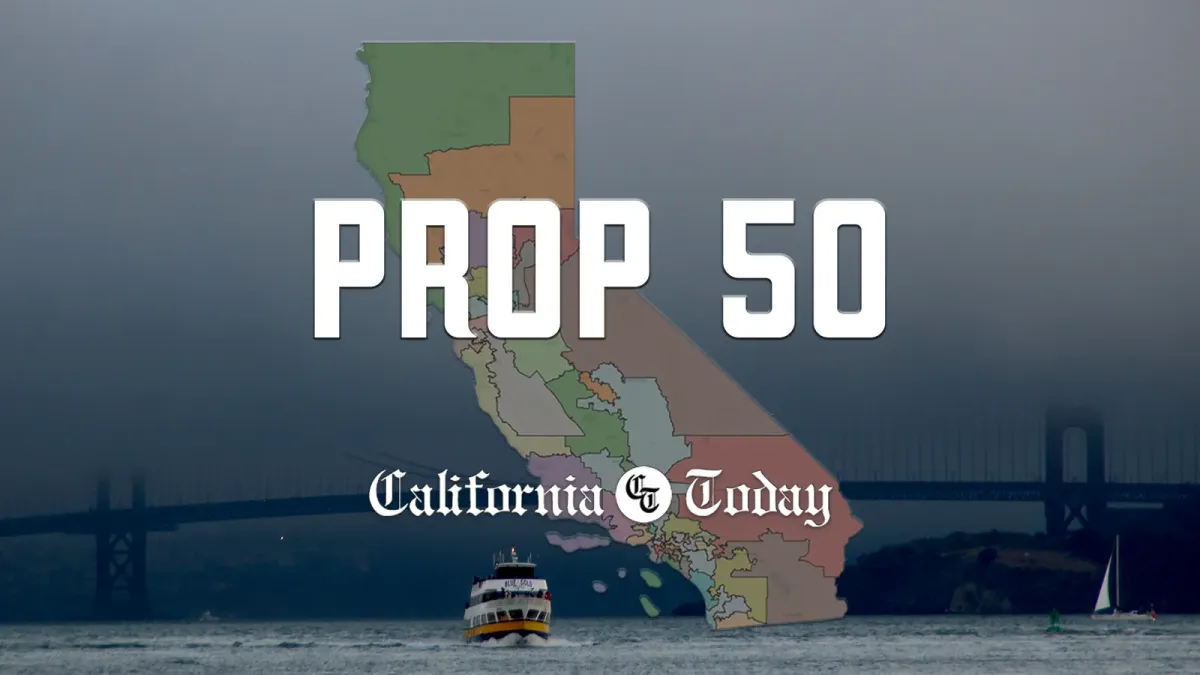California Prop 50 election results: Explore vote counts and the new congressional district map
California election results show voters approving Proposition 50, Governor Gavin Newsom’s Election Rigging Response Act, with 63.9% support statewide. Explore the new congressional district map and see when the changes take effect for 2026.

Official California Secretary of State maps showing certified statewide results and voter turnout for the November 4, 2025 special election on Proposition 50. Voters approved the measure 63.9% to 36.1%, with 35.9% turnout reported as of 8 p.m. November 5. Green counties supported the measure; red counties opposed it.
California election results for Proposition 50 are in, and voters have approved the Election Rigging Response Act, which replaces California's independent congressional map with new district boundaries set to take effect for the 2026 midterms.
Below are the complete statewide results and voter turnout figures, followed by an interactive version of California’s new congressional map so you can see how every district will change.
California Proposition 50 Election Results
Statewide Results (100% Reporting)
| Result | Votes | Percent |
|---|---|---|
| YES – Approve new congressional map | 5,291,908 | 63.9% |
| NO – Keep current map | 2,989,022 | 36.1% |
| Total ballots counted | 8,280,930 | — |
| Turnout | — | 35.9% statewide |
According to certified statewide tallies from the Secretary of State, Proposition 50 passed with 5,291,908 votes in favor (63.9%) and 2,989,022 votes opposed (36.1%), with total voter turnout at 35.9%.
Historical Context: Voter Turnout in Past California Special Elections
| Statewide Special Elections | Date | Voter Turnout |
|---|---|---|
| Statewide Special (Ballot Measure) | November 4, 2025 | 35.9% (as of Nov 5, 8 p.m.) |
| Statewide Special (Recall) | September 14, 2021 | 58.45% |
| Statewide Special (Ballot Measures) | May 19, 2009 | 28.40% |
| Statewide Special (Ballot Measures) | November 8, 2005 | 50.14% |
| Statewide Special (Recall) | October 7, 2003 | 61.20% |
Voter turnout for California’s November 4 special election reached 35.9% as of 8 p.m. November 5, according to the Secretary of State’s office—lower than the 2021 recall but higher than the 2009 special ballot measure election.
Proposition 50’s passage marks the first voter-approved mid-decade redistricting in U.S. history. The outcome gives Democrats a potential gain of up to five House seats in 2026—roughly offsetting Republican map changes in Texas and other states.

Explore California’s new congressional districts
Use the interactive map below to view the new district boundaries adopted under Proposition 50. Zoom into your county or city to compare the 2021 commission lines with the new 2026 districts.
The map reshapes California’s 52 congressional districts—creating three majority-Latino seats, expanding representation for Asian- and Black-majority communities, and consolidating urban areas across Los Angeles, the Bay Area, and the Inland Empire.
What Happens Next
With Proposition 50 approved, California’s new congressional map will replace the state’s existing Citizens Redistricting Commission lines for the 2026 and 2028 elections.
Here’s what happens from here:
- Certification: County election offices must certify results by December 2, 2025, followed by statewide certification from the Secretary of State.
- Implementation: The new districts will take effect in time for the June 2, 2026 primary election.
- Duration: The Legislature’s map will remain active through the 2030 election cycle, after which California’s independent commission will reconvene and resume full authority for post-census redistricting in 2031.
Legal challenges remain possible. Proposition 50 limits jurisdiction over state-law disputes to the California Supreme Court, while any federal claims—such as Voting Rights Act questions—would proceed in U.S. District Court.
Supporters say these guardrails ensure a fast, orderly transition. Opponents argue they constrain judicial oversight and invite future political meddling.
National Implications
California’s approval of Proposition 50 represents a major escalation in the nationwide redistricting standoff.
The measure was designed as a direct counter to Republican-led mid-cycle redistricting in Texas, Missouri, and Ohio, where GOP lawmakers are working to draw new maps that could net up to 10–12 additional Republican seats before 2026.
By contrast, California’s new plan could add as many as five Democratic-leaning districts, balancing those GOP gains and reshaping the math for control of the U.S. House of Representatives, which currently stands at 219 Republicans, 213 Democrats, and three vacancies.
Governor Gavin Newsom and former President Barack Obama both championed the initiative, casting it as a defense of democracy. Critics—including former Governor Arnold Schwarzenegger and reform advocates—warn it undermines the independent model California voters created in 2008 and 2010.
Bottom Line
California voters have approved the first mid-decade redistricting in state history, setting the stage for a new political map ahead of the 2026 midterms.
Scroll through the interactive tool above to see how your district will change—and how this landmark decision could reshape the balance of power in Washington over the next five years.







